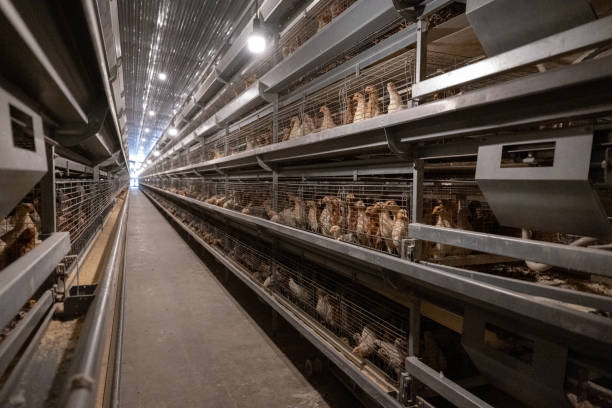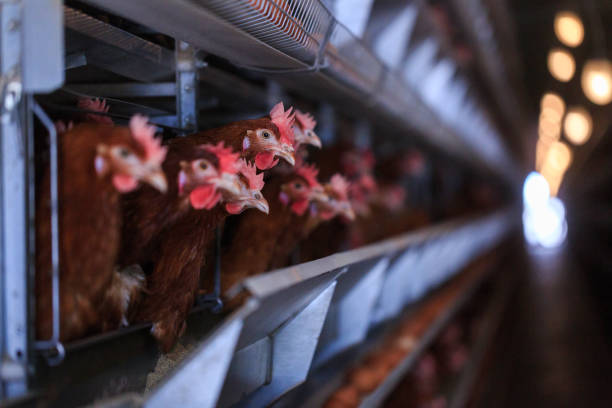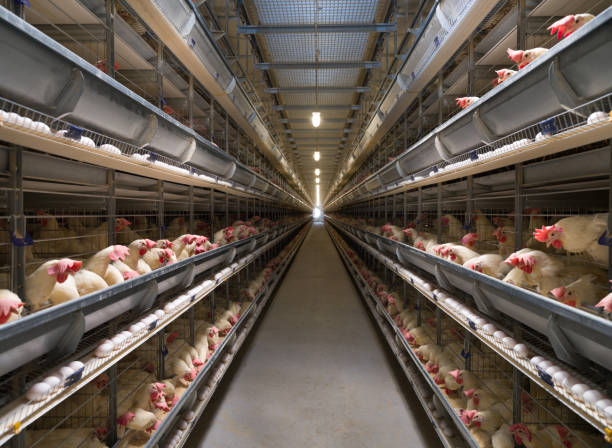
Investing in Large-Scale Poultry Farming in Tanzania: A Guide
Investing in Large-Scale Poultry Farming in Tanzania: A Guide
Tanzania, with its favorable climate, growing population, and increasing demand for poultry products, presents a compelling opportunity for investors looking to venture into large-scale poultry farming. However, like any significant investment, understanding the landscape, challenges, and key success factors is crucial. This guide provides a comprehensive overview of investing in large-scale poultry farming in Tanzania, covering aspects from market analysis to operational strategies, and everything in between.
Market Overview: Why Tanzania is a Good Bet for Poultry Farming
The Tanzanian poultry market is experiencing steady growth, driven by several factors:
Increasing Population and Urbanization: Tanzania’s population is growing rapidly, with a significant portion migrating to urban areas. This urbanization leads to increased demand for protein, and poultry, being a relatively cheaper and more accessible source, benefits significantly.
Rising Incomes: As the economy grows, more Tanzanians have disposable income, leading to increased consumption of meat products, including chicken and eggs.
Changing Dietary Habits: There’s a gradual shift in dietary preferences towards more protein-rich foods, with many consumers incorporating poultry into their regular meals.
Government Support: The Tanzanian government recognizes the importance of agriculture, including poultry farming, and has implemented policies to encourage investment in the sector. These policies include tax incentives, access to credit, and support for infrastructure development.
Types of Poultry Farming Suitable for Large-Scale Investment
When considering investing in large-scale poultry farming, you have two primary options:
Broiler Farming (Meat Production): Broilers are chickens raised specifically for meat production. They grow rapidly, reaching marketable weight in just a few weeks. Large-scale broiler farming requires specialized facilities for housing, feeding, and waste management.
Layer Farming (Egg Production): Layers are hens raised specifically for egg production. They start laying eggs at around 18-20 weeks of age and continue for about a year. Large-scale layer farming requires specialized cages or housing systems, feeding and watering systems, and egg collection and processing facilities.
Key Considerations Before Investing
Before diving into the investment, carefully consider the following aspects:
Market Research: Conduct thorough market research to understand the demand for poultry products in your target region. Identify your potential customers, whether they are retailers, wholesalers, restaurants, or consumers. Analyze the existing competition and identify opportunities for differentiation.
Location: The location of your poultry farm is crucial. Consider factors such as access to water, electricity, transportation, and proximity to markets. The availability of land at a reasonable price is also a key consideration. Ideally, the location should be relatively isolated to minimize the risk of disease outbreaks.
Financial Planning: Develop a detailed business plan that includes projections for revenue, expenses, and profits. Assess your funding requirements and explore different financing options, such as bank loans, government grants, or private equity. It is important to incorporate buffers for unexpected expenses and delays.
Environmental Impact Assessment: Large-scale poultry farming can have environmental impacts, such as waste management and odor control. Conduct an environmental impact assessment to identify potential risks and develop mitigation strategies.
Essential Infrastructures and Equipment

Setting up a large-scale poultry farm requires significant investment in infrastructure and equipment.
Poultry Housing: The type of housing will depend on the type of poultry farming you choose. Broiler houses typically have open-sided designs with earth floors covered in bedding material. Layer houses often use cage systems or deep litter systems. The housing should be well-ventilated, insulated, and equipped with proper lighting.
Feeding and Watering Systems: Efficient feeding and watering systems are essential for poultry health and productivity. Automatic feeding systems can distribute feed evenly and reduce labor costs. Nipple drinking systems provide a constant supply of clean water and minimize wastage.
Waste Management System: Proper waste management is crucial for biosecurity and environmental protection. Manure can be composted, used as fertilizer, or processed into biogas.
Biosecurity Measures: Implement strict biosecurity measures to prevent disease outbreaks. These measures include controlling access to the farm, disinfecting vehicles and equipment, and vaccinating birds.
Egg Collection and Processing Equipment (For Layer Farms): If you are investing in layer farming, you will need equipment for collecting, cleaning, grading, and packaging eggs. Automatic egg collection systems can reduce labor costs and improve efficiency.
Climate Control Systems: Tanzania can experience extreme temperatures. Climate control systems, such as ventilation fans and cooling pads, help maintain optimal temperatures inside the poultry houses, improving bird health and productivity.
Choosing the Right Poultry Breed
Selecting the right poultry breed is a critical decision that will significantly impact your farm’s profitability.
Broiler Breeds: Popular broiler breeds include Cobb 500, Ross 308, and Hubbard. These breeds are known for their rapid growth rate, high meat yield, and disease resistance.
Layer Breeds: Common layer breeds include Lohmann Brown, Hy-Line Brown, and ISA Brown. These breeds are known for their high egg production, egg quality, and feed efficiency.
Operational Strategies for Success
Successfully managing a large-scale poultry farm requires careful planning and execution.
Poultry Health Management: Implement a comprehensive poultry health management program that includes vaccination, disease prevention, and early detection of health problems. Consult with a qualified veterinarian to develop a suitable health plan.
Feed Management: Feed accounts for a significant portion of the operating costs. Optimize feed rations to ensure that birds receive the necessary nutrients for growth and egg production. Consider sourcing feed ingredients locally to reduce costs.
Quality Control: Implement strict quality control measures throughout the production process, from chick arrival to product delivery. Monitor bird health, feed quality, and environmental conditions.
Staff Training: Hire qualified and experienced staff to manage the poultry farm. Provide regular training on poultry management techniques, biosecurity protocols, and quality control procedures.
Record Keeping: Maintain accurate records of all aspects of the operation, including bird numbers, feed consumption, egg production, mortality rates, and expenses. Use this data to identify areas for improvement and make informed decisions.
Navigating Challenges
Poultry farming in Tanzania, while promising, presents challenges. Some common obstacles include:
Disease Outbreaks: Poultry diseases, such as Newcastle disease and avian influenza, can cause significant losses. Implementing strict biosecurity measures and vaccination programs can help prevent outbreaks.
Feed Costs: Feed prices can fluctuate due to factors such as weather conditions and market demand. Sourcing feed ingredients locally and optimizing feed rations can help mitigate the impact of price fluctuations.
Market Volatility: Poultry prices can fluctuate due to changes in supply and demand. Developing strong relationships with customers and diversifying your product offerings can help buffer against market volatility.
Power Outages: Unreliable power supply can disrupt operations and cause losses. Investing in a backup generator can ensure a continuous power supply.
Lack of Access to Credit: Securing financing for large-scale poultry farming can be challenging. Developing a strong business plan and building relationships with financial institutions can improve your chances of obtaining credit.
Government Support and Regulations
The Tanzanian government is actively promoting the development of the poultry industry through various policies and programs.
Tax Incentives: The government offers tax incentives to investors in the agricultural sector, including poultry farming.
Access to Credit: The government provides access to credit through various programs, such as the Tanzania Agricultural Development Bank (TADB).
Training and Extension Services: The government provides training and extension services to farmers to improve their poultry management skills.
Regulatory Framework: The poultry industry is regulated by the Tanzania Veterinary Laboratory Agency (TVLA) and the Tanzania Food and Drugs Authority (TFDA). These agencies ensure that poultry products meet safety and quality standards.
Sustainable Practices in Large-Scale Poultry Farming
Adopting sustainable practices is not only environmentally responsible but also economically beneficial in the long run.
Waste Management: Implement efficient waste management systems to minimize environmental pollution. Manure can be composted and used as fertilizer, reducing the need for chemical fertilizers. Anaerobic digesters can be used to convert manure into biogas, providing a renewable energy source.
Water Conservation: Implement water conservation measures, such as using drip irrigation systems and recycling water.
Energy Efficiency: Use energy-efficient lighting and equipment to reduce energy consumption. Consider using renewable energy sources, such as solar power.
Animal Welfare: Provide adequate space and ventilation for birds to ensure their welfare. Follow humane handling and slaughtering practices.
The Role of Technology in Modern Poultry Farming

Technology plays a vital role in enhancing the efficiency and productivity of modern large-scale poultry farms.
Automated Feeding and Watering Systems: These systems minimize labor costs and ensure consistent feed and water supply to the birds.
Environmental Control Systems: Sensors and automated controls monitor and regulate temperature, humidity, and ventilation inside the poultry houses, creating optimal conditions for bird health and growth.
Data Management Systems: Software solutions help track and analyze data on bird health, feed consumption, egg production, and other key performance indicators, enabling informed decision-making.
Remote Monitoring Systems: These systems allow farmers to remotely monitor the farm’s operations, including temperature, humidity, and bird activity, using smartphones or computers.
Precision Feeding Systems: These systems use sensors and software to determine the individual feed requirements of each bird, optimizing feed efficiency and reducing waste.
Developing a Strong Marketing Strategy
A well-defined marketing strategy is essential to ensure that you can sell your poultry products at a profitable price.

Identify Your Target Market: Determine your target market, whether it is retailers, wholesalers, restaurants, or consumers.
Develop a Brand: Create a strong brand identity that differentiates your products from the competition.
Build Relationships with Customers: Establish strong relationships with your customers by providing high-quality products and excellent service.
Explore Different Sales Channels: Consider selling your products through different channels, such as direct sales, farmers’ markets, and online platforms.
Promote Your Products: Use various marketing techniques to promote your products, such as advertising, social media, and public relations.
Conclusion: Is Large-Scale Poultry Farming Right for You?
Investing in large-scale poultry farming in Tanzania presents a significant opportunity for generating wealth and contributing to the country’s food security. However, it requires careful planning, significant investment, and a strong commitment to operational excellence. By carefully considering all the factors discussed in this guide, you can assess the feasibility of this investment and develop a plan for success. Ultimately, the decision to invest depends on your risk tolerance, financial resources, and management capabilities. Careful consideration and thorough preparation are the keys to thriving in the Tanzanian poultry market.
